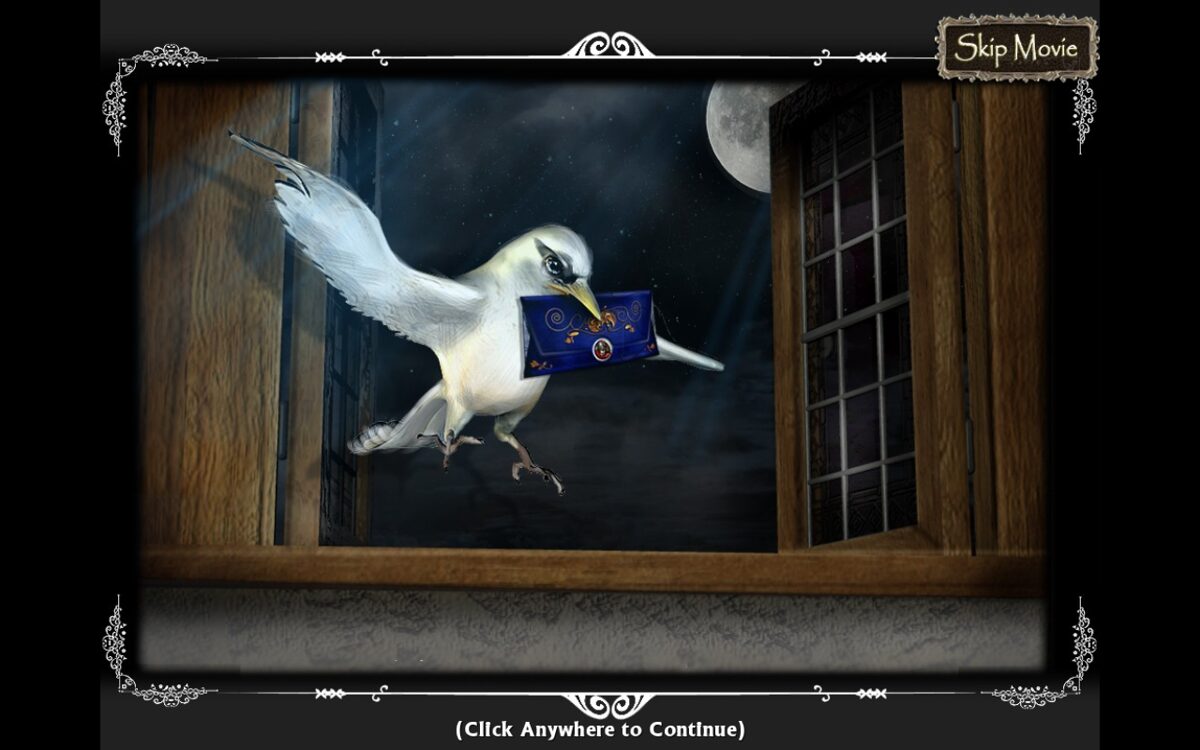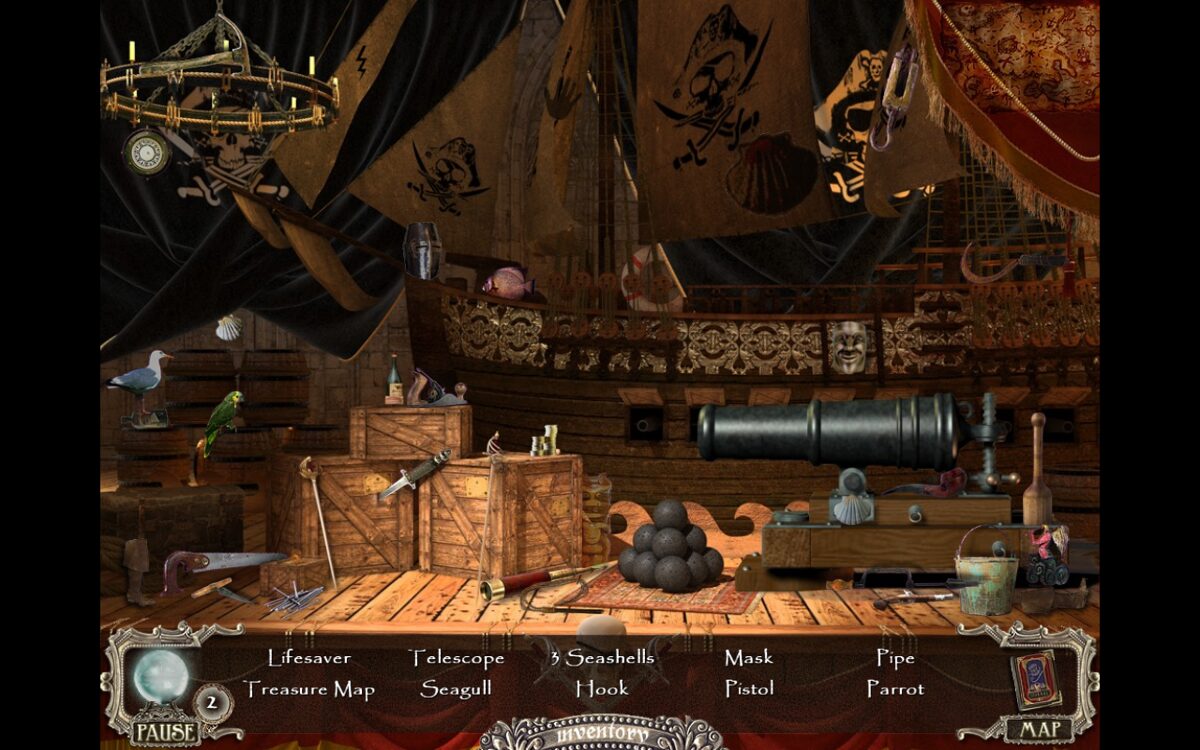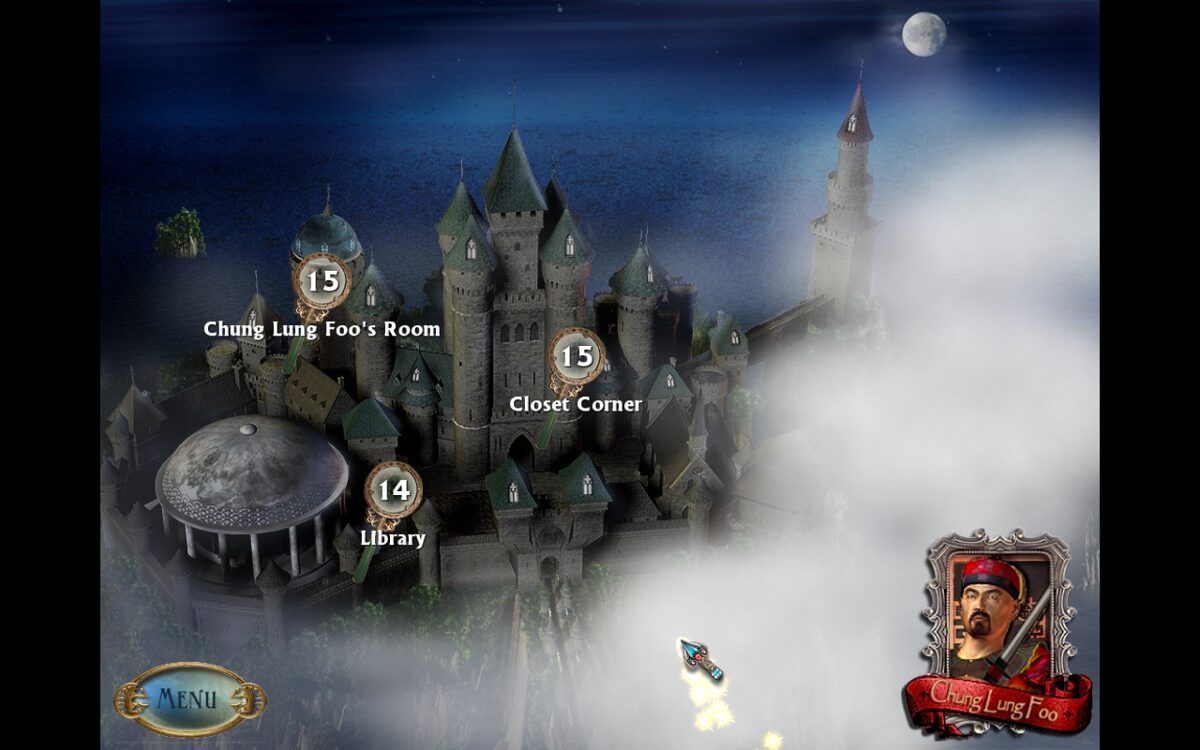Retro Replay Review
Gameplay
The Conjurer delivers a polished hidden-object experience that blends classic search-and-find mechanics with inventive adventure sequences. Each chapter introduces a new guest’s performance, unfolding within intricately designed rooms of the magician’s medieval castle. Players examine richly detailed environments, using the crystal ball tool to reveal silhouettes of hidden items or calling upon it to pinpoint a stubbornly elusive object.
(HEY YOU!! We hope you enjoy! We try not to run ads. So basically, this is a very expensive hobby running this site. Please consider joining us for updates, forums, and more. Network w/ us to make some cash or friends while retro gaming, and you can win some free retro games for posting. Okay, carry on 👍)
Once all items on the list are collected, the game transitions to the stage performance mode. Here, you carefully arrange props according to a schematic, recreating the illusions performed by The Conjurer and his rivals. This shift from static object hunting to hands-on stagecraft adds a refreshing layer of strategy, as you decipher the correct placement and timing to deliver each trick flawlessly.
Puzzles punctuate the narrative between chapters, requiring direct manipulation of mechanical contraptions. Whether it’s aligning rotating rings or tweaking levers to restore a broken automaton, these interludes offer a welcome break from the hidden-object formula and reinforce the historical, steampunk-inspired atmosphere of the 19th-century setting.
Accessible even to newcomers, the game’s difficulty scales gradually. Hints regenerate over time, and the in-game journal records plot developments as well as step-by-step guides to each trick. This ensures you never feel lost, while still providing a sense of accomplishment when you solve a particularly thorny puzzle or complete a challenging performance.
Graphics
The Conjurer’s visual presentation shines in its meticulous attention to period detail and architectural authenticity. The castle’s dusty corridors, candlelit chambers, and velvet-draped stage all evoke the mystique of a 19th-century magician’s retreat. Textures are sharp and clear, making it easy to distinguish between genuine clue items and mere decorative flourishes.
Color palettes shift subtly from one chapter to the next, reflecting the mood of each guest’s trick. Warm amber lighting bathes the alchemist’s laboratory in an otherworldly glow, while cool moonlight streams through stained-glass windows in the somber catacombs. These visual contrasts keep exploration fresh and immersive throughout the game’s duration.
Animation is used sparingly but effectively—when you activate the crystal ball, a swirling mist reveals hidden silhouettes, and stage performances come alive with flourish as curtains part and spotlights converge. Minor particle effects, such as drifting dust motes and flickering candle flames, further enhance the atmosphere without overwhelming your ability to spot tiny objects.
Overall, the graphics strike a fine balance between ornate set design and functional clarity. Even in densely cluttered scenes, intuitive visual cues guide your eye toward interactive elements, ensuring that the hidden-object segments remain engaging rather than frustrating.
Story
At its heart, The Conjurer weaves a tale of ambition, rivalry, and redemption. The titular magician, once celebrated across Europe, has suffered a streak of ill-fated performances and retires to his ominous castle. By inviting his contemporaries for one final contest, he sets the stage for an intricate game of wits and secrets.
As each guest arrives—ranging from a daring escapologist to a mystical medium—the narrative unfolds through journal entries, letters, and cryptic stage notes. These snippets reveal backstories, hidden grudges, and long-lost alliances, culminating in the alluring promise of the Hall of Secrets: a vault containing the collective wisdom and stolen illusions of The Conjurer’s entire career.
Though the overarching plot is straightforward, it’s enriched by subtle twists and character interactions. Puzzles often tie directly into the storyline—a sabotaged trapdoor in the engineer’s workshop reflects a subplot of betrayal, while the diviner’s séance room brims with spectral clues pointing to an ancient prophecy.
The journal serves as more than a hint system—it doubles as a narrative archive. As you progress, beautifully illustrated entries chronicle not only your progress but also the evolution of each illusion, deepening your connection to the world and its cast of enigmatic performers.
Overall Experience
The Conjurer offers a cohesive blend of hidden-object exploration, tactile puzzle-solving, and theatrical flair. Its thoughtful pacing and layered mechanics prevent monotony, ensuring that each chapter feels like a fresh stage in an unfolding drama. From the first search through a dusty study to the final revelation in the Hall of Secrets, you’re treated to a journey that balances challenge with accessibility.
Immersive audio cues—creaking floorboards, distant thunder, hushed whispers—complement the visuals and heighten the sense of mystery. Subtle musical motifs accompany each guest’s chapter, reinforcing their unique style and the emotional weight of their rivalry with The Conjurer.
While seasoned hidden-object enthusiasts will appreciate the depth of the puzzles and the layered trick schematics, newcomers will find the gradual learning curve welcoming. The hint system, detailed journal, and clear visual feedback make for a user-friendly experience that still rewards careful observation and critical thinking.
In sum, The Conjurer stands out as a well-crafted adventure that celebrates the art of illusion. Its blend of narrative intrigue, dynamic gameplay shifts, and evocative design make it an engaging choice for anyone who enjoys cerebral challenges wrapped in atmospheric storytelling. Whether you’re a fan of hidden-object games or simply drawn to tales of magic and mystery, this title casts a spell that’s hard to resist.
 Retro Replay Retro Replay gaming reviews, news, emulation, geek stuff and more!
Retro Replay Retro Replay gaming reviews, news, emulation, geek stuff and more!








Reviews
There are no reviews yet.